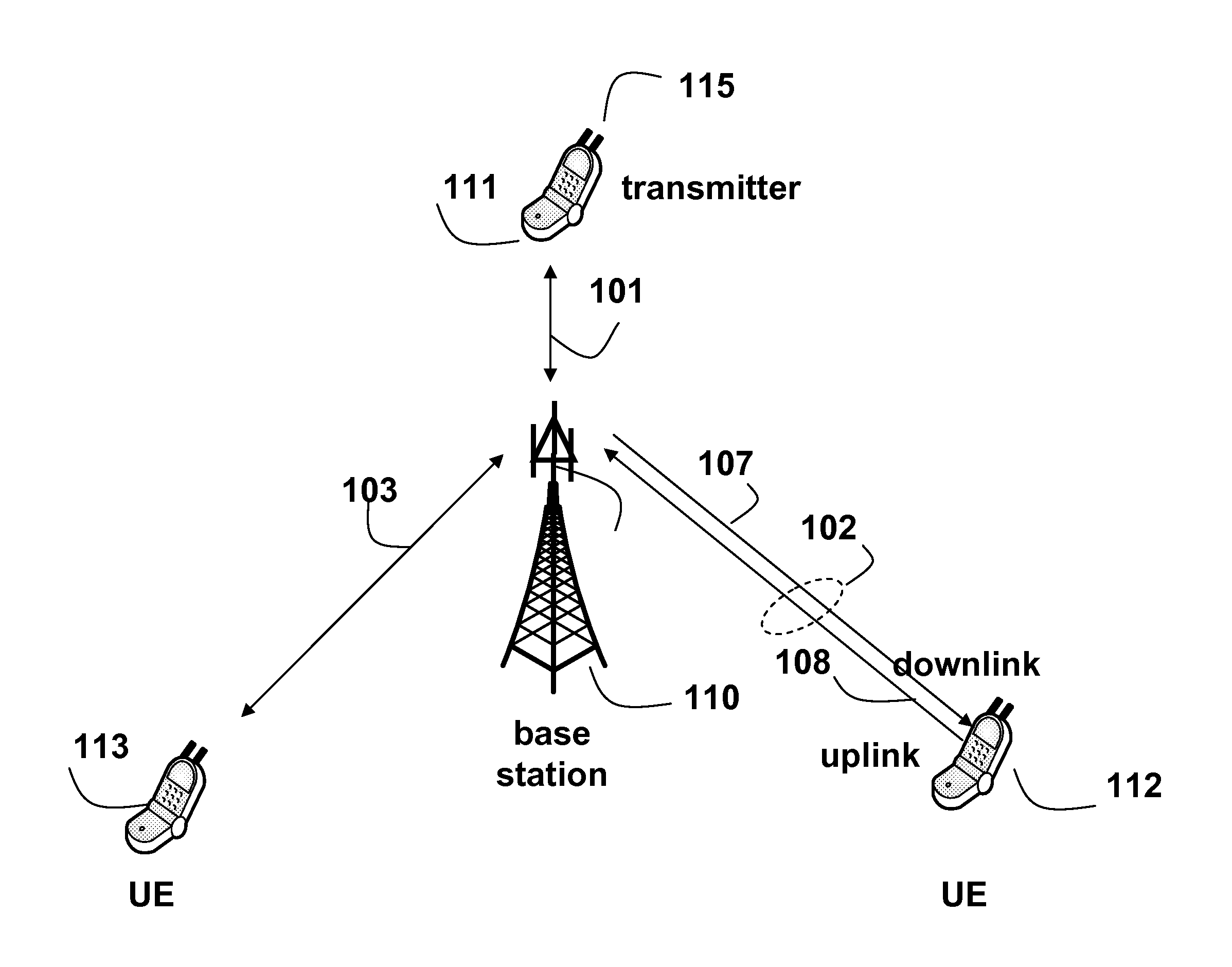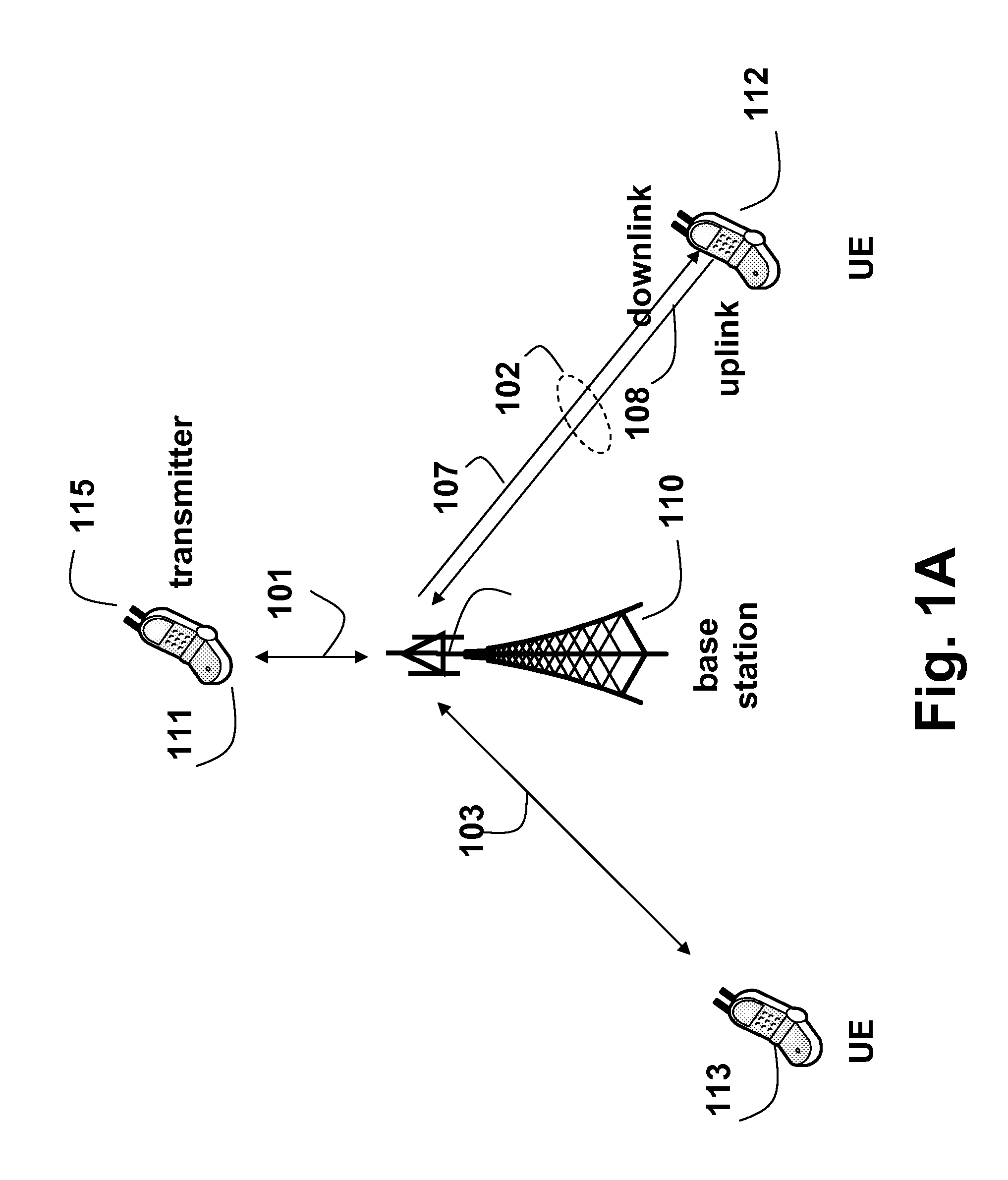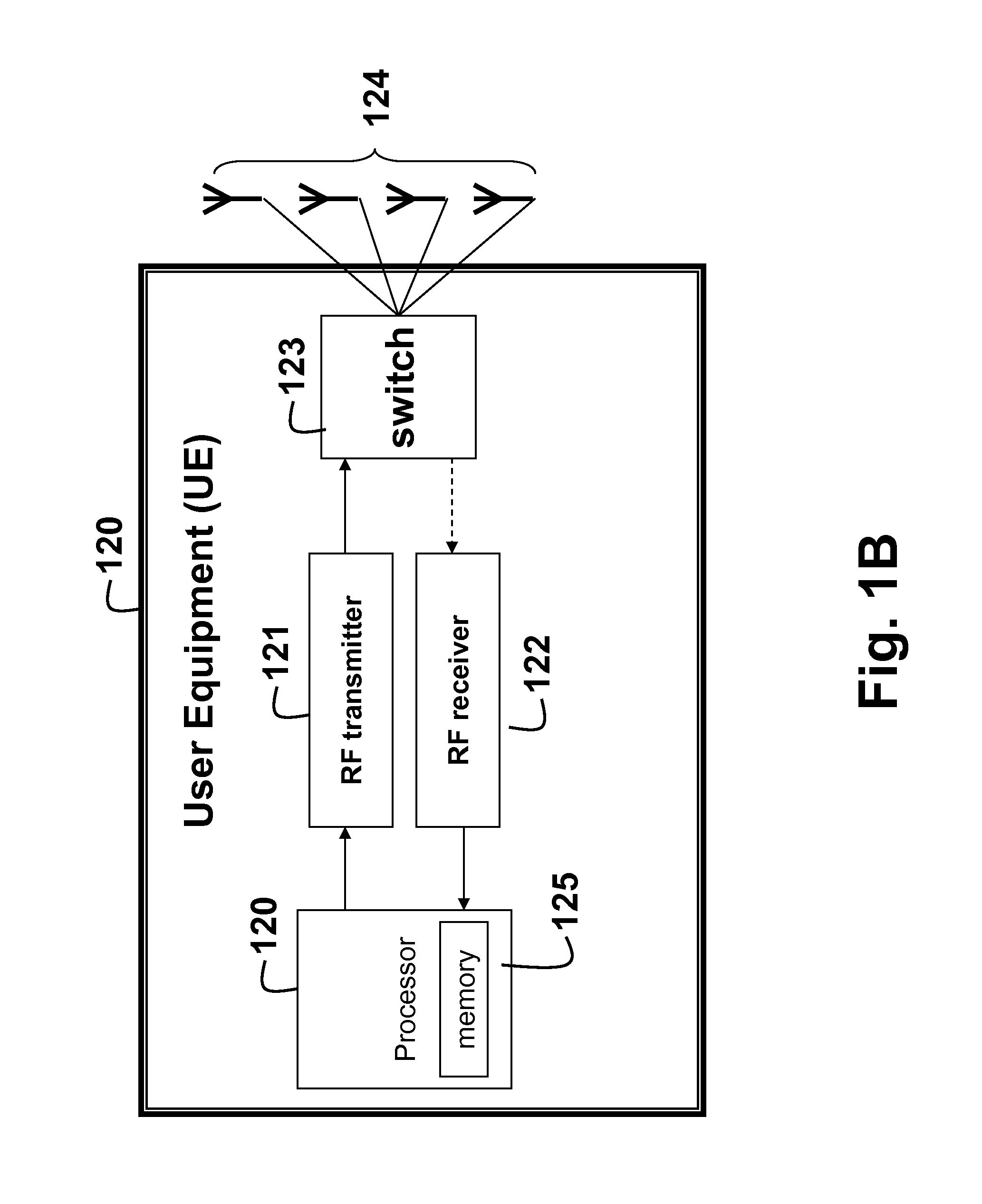Antenna Selection with Frequency-Hopped Sounding Reference Signals
a frequency-hopped sounding and reference signal technology, applied in the direction of digital transmission, transmission path sub-channel allocation, wireless communication, etc., can solve the problems of increasing complexity exponentially, rf chain complexity, and relatively simple antennas
- Summary
- Abstract
- Description
- Claims
- Application Information
AI Technical Summary
Problems solved by technology
Method used
Image
Examples
Embodiment Construction
[0052]Network Overview
[0053]FIG. 1 shows a (general structure of a wireless network according to an embodiment of the invention. In one embodiment, the network operates according the 3GPP long term evolution standard (LTE). Multiple mobile user equipments (UEs) 111-113 communicate with a stationary base station (BS) 110. Each UE and the BS includes a transceiver.
[0054]The BS is called an evolved Node B (eNodeB) in the LTE standard. The BS manages and coordinates all communications with the UEs in a cell using wireless channels or connections 101, 102, 103. Each connection can operate as a downlink (DL) 107 from the BS station to the UE or as an uplink 108 from the UE to the BS. Because the transmission power available at the BS is orders of magnitude greater than the transmission power at the UE, the performance on the uplink is much more critical.
[0055]FIG. 1B is a block diagram of detail of UE 120. UE includes a processor for performing steps of the method described herein. The pr...
PUM
 Login to View More
Login to View More Abstract
Description
Claims
Application Information
 Login to View More
Login to View More - R&D
- Intellectual Property
- Life Sciences
- Materials
- Tech Scout
- Unparalleled Data Quality
- Higher Quality Content
- 60% Fewer Hallucinations
Browse by: Latest US Patents, China's latest patents, Technical Efficacy Thesaurus, Application Domain, Technology Topic, Popular Technical Reports.
© 2025 PatSnap. All rights reserved.Legal|Privacy policy|Modern Slavery Act Transparency Statement|Sitemap|About US| Contact US: help@patsnap.com



